One of the most important aspects of disaster preparedness is storing plenty of food. While many emergency organizations in America say you only need to have a few days’ worth of food storage in your home, someone with a little more common sense would certainly say, the more the merrier. Realistically, you want to have enough food to last you and your entire household (that’s animals included) for at least three weeks.
[the_ad_placement id=”in-text-1-type-r”]There are a number of different techniques for building up your emergency food storage, some costly, many frugal enough for anyone to get started with. It all starts with evaluating your family’s food requirements. Start with a typical day in your household, and make a list of about how much food you went through. Then go through a typical week, just to weed out any variables, like eating out, birthday parties, and other events that would influence your typical grocery consumption.
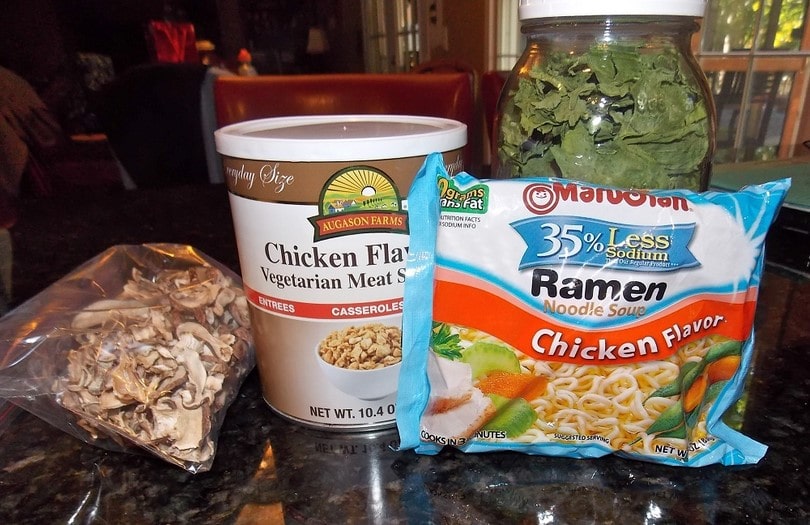
Once you can configure the amount of food your household goes through in a typical week, try to simplify your typical diet into things that are going to last in dry storage. There are a number of different foods you can store for emergencies-don’t limit yourself to just mountains of beans and pasta!
Here are a few different options for diversifying your emergency food storage. It may seem petty to focus on anything but just having food stored, but when your wife starts refusing to eat another bite of kidney beans, you’ll start to wonder what the point was of storing all that if your family’s just going to starve themselves anyway. Do your future self a favor-diversify that emergency pantry, so you don’t go crazy one day when you actually have to start eating it.
Long term food storage
One key component of building up your emergency food storage is making sure that you store it properly in the first place. There are some simple mistakes that anyone can make that will completely ruin hundreds of dollars’ worth of food before you know it. The last thing you want to do is put all of that time, effort, and money into your emergency food storage, only to have it spoil when you need it the most. Here are a few basic techniques for successful food storage, and making it all last as long as possible.
Eat what you store
This may seem a little counter-intuitive; after all, isn’t the point to hold onto your food? Yes and no. The thing is, plenty of food has a shelf life of less than a year. Even if it’s stored remarkably well, it’s not going to last forever, and presumably not until the next major catastrophe. The best way to ensure you don’t wind up wasting a pantry full of food is to store what you eat, and eat what you store.
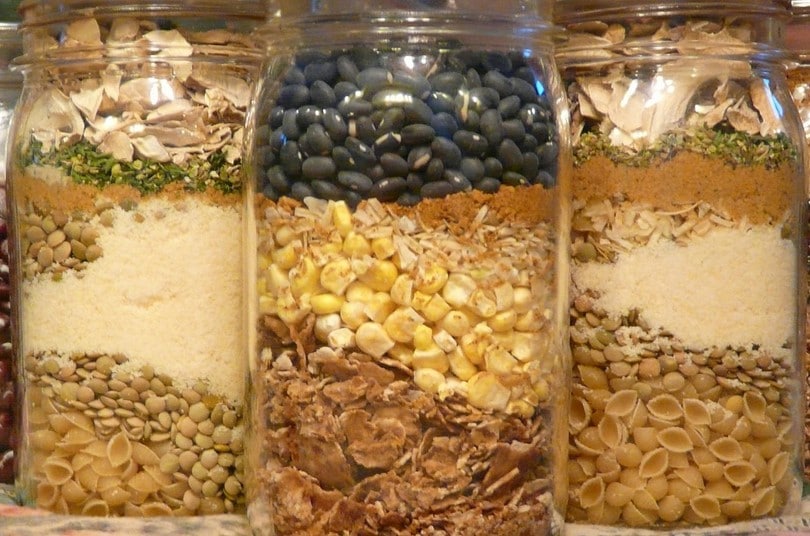
Then of course, as you work through some of your emergency food storage, be sure to replace what you eat so supplies aren’t depleted. This will keep a fresh stock of food in rotation, and ensure that you store only what is actually appetizing to you.
Be mindful of storage containers
Depending on your climate and the temperature of the area you’re storing your food in, you’ll want to select storage containers that correspond. Typically, the standard packaging that things like crackers, pasta, and beans come in won’t work for the long term. Boxes aren’t airtight, bags deteriorate over time, and neither are pest-proof.
There are lots of commercially available emergency food storage options out there that will address all of the primary concerns, and even store in a space-saving fashion so you can cram as much food as possible into your space. Take a look online for products marketed specifically for this purpose, or even stop in the local hardware store for some lidded buckets (great for bulk food storage).
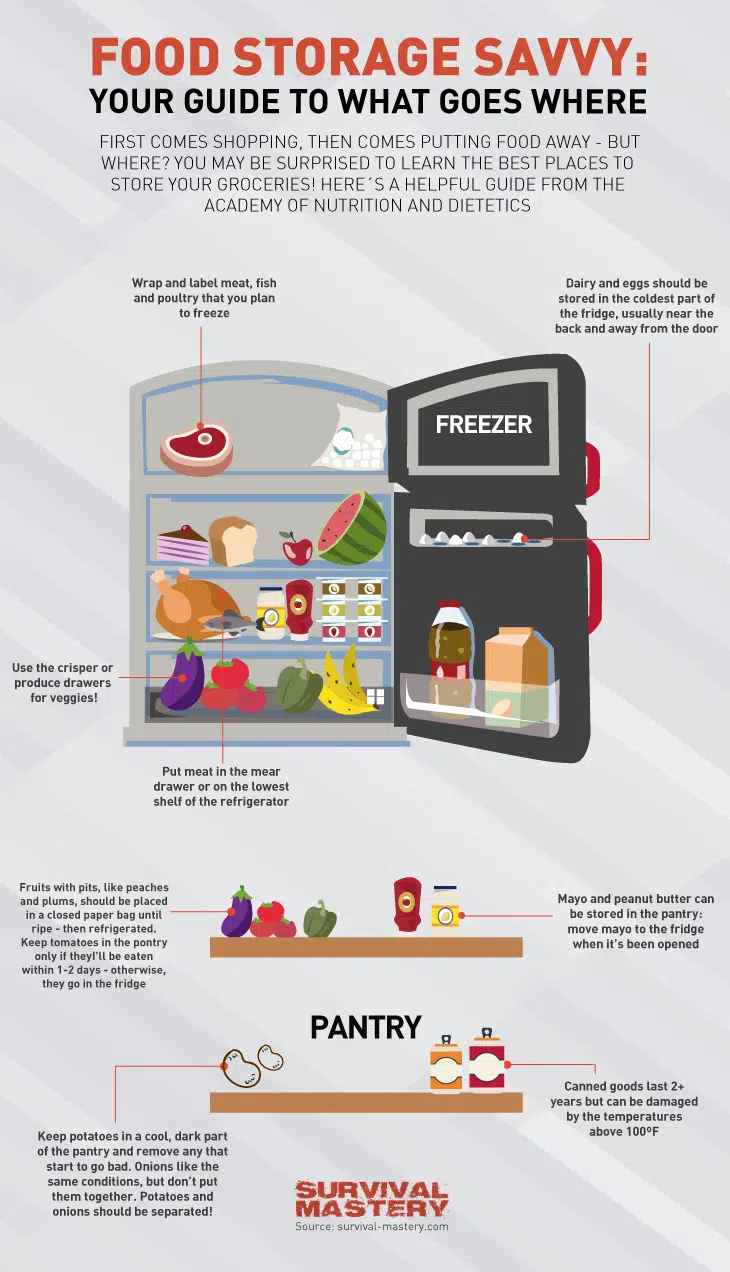
There are plenty of options out there, but you’ll want to select something that won’t leach the plastic chemical BPA into your food, so in general plastic bags and containers are out. In addition, if your storage area allows a lot of sunlight in, make sure that your containers don’t. Light can not only cause degradation of the storage container, but also encourage bacterial growth. Which brings us to our next point.
Select the proper storage area
In the old days, it wasn’t considered a “prepper thing” to store food-everyone had a root cellar where they kept canned goods and produce in preparation for times of hardship. Now the only food storage we use are the cupboards we pull from every day. Selecting an area specifically for storing emergency food rations won’t just free up space in your kitchen-it will allow you to prepare the most optimal environment for long term storage.
Not all rooms are created equal when it comes to food storage. Basements can be damp, mud rooms can be sunny, and any area where there is frequent activity is susceptible to some major temperature swings. This can produce everything from stale food to mold-not ideal for someone who wants to actually be able to use this food in an emergency.
The ideal food storage room is going to be a cool, dry place, with little sunlight or human activity. You’ll want to make sure the humidity stay low, and that there aren’t any drafts circulating through the place unbeknownst to you. Once you’ve got the perfect room, rig up some shelves and cabinets, and start filling them up.
Keep moisture out
One of your biggest enemies when storing food long term is moisture. Even the smallest amount trapped inside of a dry storage container can wreak havoc and cause mold to grow rapidly. If you’re storing dry goods that typically need to be rinsed before eaten, like beans, save the rinsing for when you actually go to eat them.
Even if you let them sit on your kitchen counter to dry out for a day or two, there’s just no guaranteeing you’re going to get every last drop of water out of there. Play it safe and just store as is. Even more, to avoid moisture at all, you can use a food dehydrator. This will reduce the volume occupied by food and elongate the shelf life for meats, vegetables, and fruits. If you’re interested, take a look at our reviews on the best food dehydrator where you can read more about features.
Rotate your stock
Just like grocery stores rotate their products to keep the oldest at the front and the freshest at the back, you should also have a strict rotation for your emergency food stores to make sure that nothing gets forgotten and left at the back of the cabinet to spoil. It can be a little cumbersome at times to constantly be moving things off of shelves to put new purchases behind them, but this is another practice you can get into that will eliminate food waste and ensure that your supplies are never expired or out of date.
Meals in a jar: making the most out of the basics
You may have seen this one on Pinterest. If you do have to start with just beans and pasta (and hey, you gotta start somewhere), then you may as well make it interesting. There are plenty of ways to add flavor-and even health benefits-to these basic kitchen staples. Keeping protein sources like canned or frozen meats around will give you a component to add to the meals, should you choose to use them.
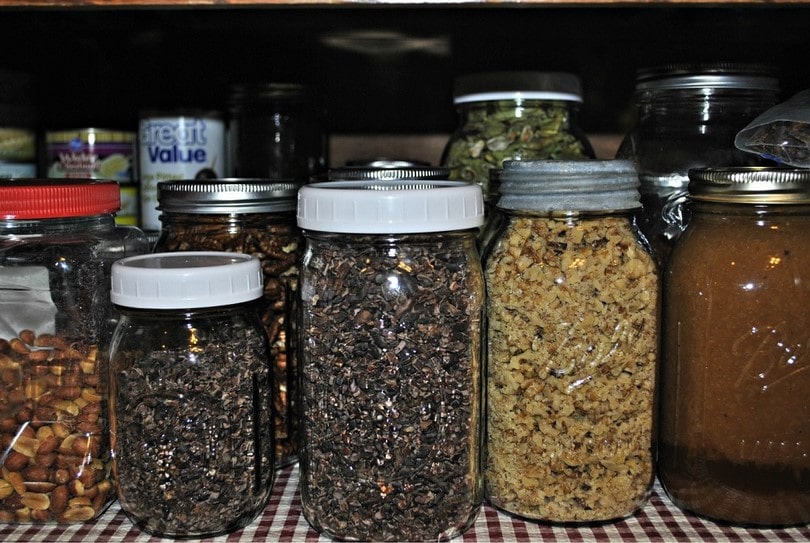
Of course, the key here is to only use dry goods in the jars, so you don’t have a bunch of potential for bacteria growth. Use only spices that have completely dried. This is the case in which a food dehydrator may come in handy.
MREs: the military’s “meal in a jar”
Most of us are familiar with the infamous MREs, the military’s long-lasting, no refrigeration required, all inclusive meals. Originally developed in the 1980s, these were designed to be lightweight, long-lasting meals that could meet the caloric requirements of an active service member. Many innovations have been made to the over the years, with kits now including biodegradable utensils, 24 different menu options, and even water activated cooking devices to produce hot meals.
[the_ad_placement id=”in-text-2-type-r”]What’s more is that the packaging for MREs is designed to withstand a myriad of extreme conditions. Since they’re often dropped out of planes with parachutes, they’re built to keep the food stable and bacteria free through a number of severe temperature changes. On average, the MREs have a shelf life of a little over three years, making them an excellent emergency food storage commodity. Just make sure you’re prepared to actually eat them when their expiration date starts to roll around.
Civilians can actually purchase these meals in bulk quantities online. It’s not the most economical option, but if you have more money than time to spare on the project, it may be worth the investment. There is also the option of making them at home – read more about this in our article here.
Opportunity buying
One of the simplest and most economical ways to build up your emergency food storage is to engage in a little opportunity buying. Here’s how it works. Say you’re at the store, and you need to buy a jar of peanut butter, but then notice it’s on sale that week. You may only need one jar, but as an opportunist, you buy a few extras, and add them to your long term food storage. If you do this every time you go grocery shopping, before you know it you’ll have a pantry full of food, without spending a large sum of money up front.
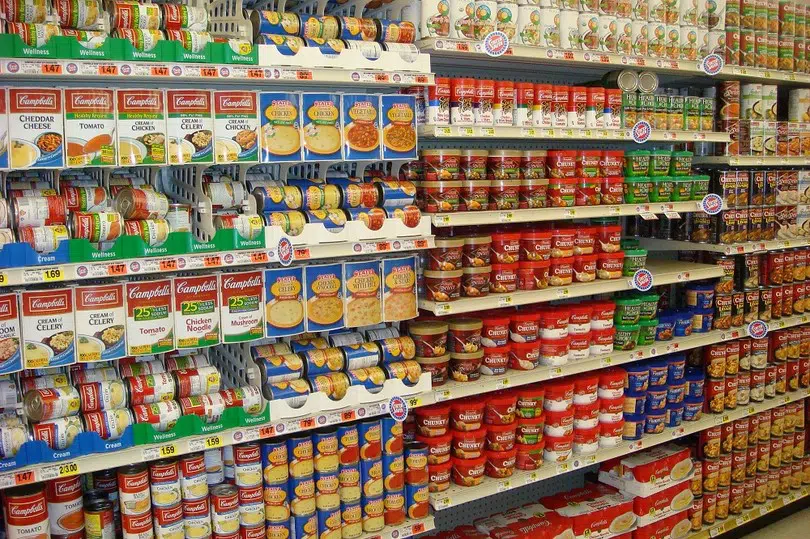
What I love about this means of storing food is that you never having to break the bank and you’re only storing the foods you would normally eat anyway. And don’t forget, you can absolutely do this with fresh foods as well. If you happen to see a great deal on potatoes, but don’t necessarily feel like eating 20 pounds of French fries in the next few weeks, buy them anyway and set aside some time to prep them. That 20 pound bag of potatoes can become several freezer bags full of hash browns, frozen mashed potatoes, and even homemade French fries.
Purchasing meats in bulk
One excellent way to build up your food stores and get a bulk purchase discount is to buy your meats right from the source. You can talk to a local butcher shop-or better yet, a farmer nearby-about buying a half of a pig or cow from them. However, keep in mind that these animals have a hanging weight of several hundred pounds (that’s after processing), and you’ll need plenty of freezer space to store it all.
If you don’t have a big enough freezer for all of that, and there’s no way to purchase only a half or a quarter of the animal, talk to your neighbors and friends, and see if they’d be interested in going in on the purchase with you. You’ll both be saving a bunch of money by buying in such a large quantity, and you won’t have to worry about having commercial freezer space to store it all.
You can also opt for freeze drying your food, a method extremely suited for fresh meats. If you want to know more, take a look at our article, here.
Special tools for emergency food storage
All of this food prepping and storing is definitely made a lot easier by having the proper means to process and store it. Depending on what you’re storing and how, you may or may not need all of this equipment. However, some of it can be truly invaluable in saving you time, and cutting down on the risks for improper storage.
Food dehydrator
I cannot say enough how useful this has been to have in my home. From the seasonal pleasures like jerky making and herb drying, to the food storage prepping days, this tool will serve you time and time again. One of the most critical components of storing dry goods is ensuring that all of the moisture is removed.
Though you can certainly dry certain things by hanging them near wood stoves or in arid, well ventilated areas, a dehydrator is a great way to make sure you get it all done right. Better yet, they’re small, compact design with stacked trays means you don’t have to zigzag clothesline all through your house to get things dry.
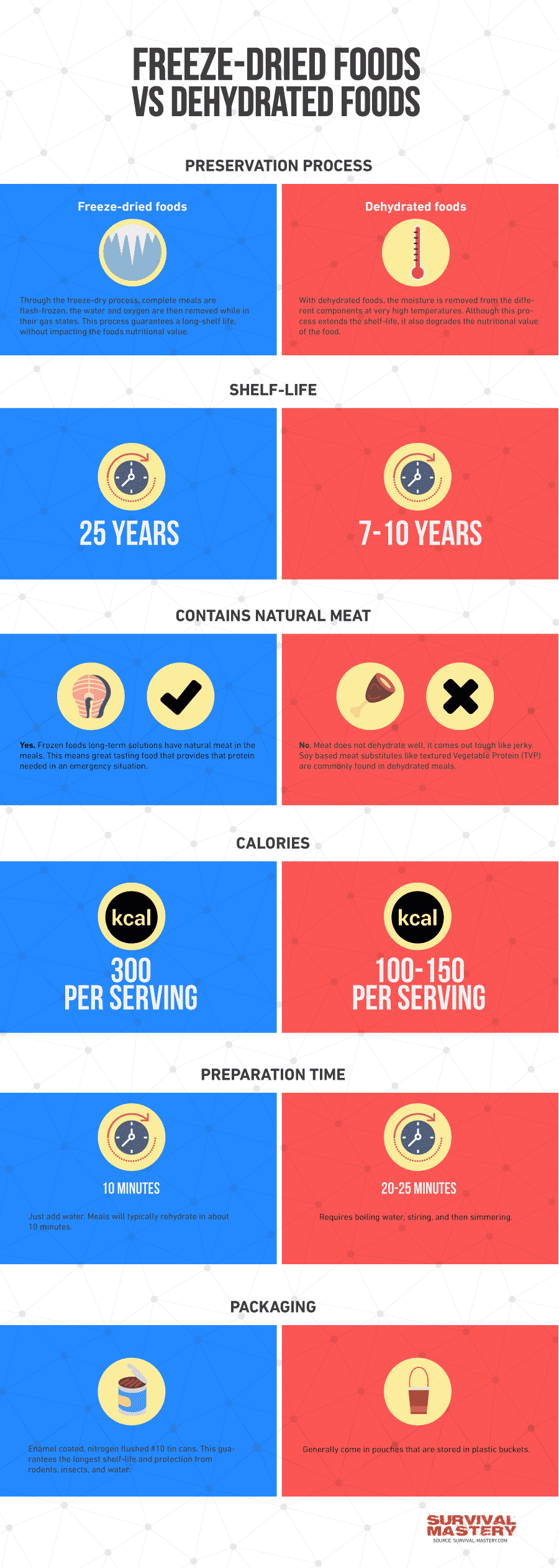
I use mine on everything from jerky to herbs. The best thing about having a dehydrator is that it opens up the possibilities for you to store your own harvest. If you have a garden, you can dehydrate a number of vegetables from your own backyard to use in soups and stews (remember the meal in a jar?). Since you’re not limited by what you have to buy in the stores, you can stock fresher foods, without all the pesticides and preservatives that so many on store shelves come with.
We also have a great article with recipes you can whip up with dehydrated food so don’t forget to take a look.
Deep freezer
This one is a hefty investment, no doubt. However, particularly with bulk meats purchases, you’ll see savings with it almost instantly for food storage. Not only do deep freezers offer additional emergency food storage space, but they typically run at a lower and much more constant temperature than freezers attached to refrigerators, making them more stable for long term food storage. Just make sure you have a power fail contingency plan. The last thing you want is to lose hundreds of dollars’ worth of food overnight because the power went out.
Can opener
Okay, I know it sounds ridiculous, and a little painfully obvious, but wouldn’t you hate to starve because 80% of your emergency food storage was canned goods, and you didn’t have anything to open the stuff with? Do your future self a favor-mount some hooks on the sides of some of your food storage shelves, and hang a few can openers in there, within easy reach.
Fermentation locks
These are some fairly unknown little gadgets in mainstream society, but highly useful for long term emergency food storage. If you’re a big fan of pickling foods, these little devices allow you to turn a mason jar into a lacto-fermentation unit by simply drilling a hole in the lid. Though these locks aren’t completely necessary in the fermentation process, they help to ensure that the oxygen is completely removed from the jar, so that your food preservation isn’t contaminated.
Plus, fermented foods have some serious health benefits. During the fermentation process, bacteria break down starches in the food, producing lactic acid, which preserves the food. However, this process also creates some great beneficial nutrients, including probiotics, enzymes, and b-vitamins. For such a small price, fermentation locks offer a fool proof food fermenting process that packs a healthy punch.
Your new second job: emergency food storage
Many people complain that food storage is one of those survival practices they just don’t have time for-any let’s face it, they’re right. It’s incredibly time consuming to prep all of that food, even just to prepare the storage space takes a considerable amount of planning and set up. That’s why it’s important to look at emergency food storage as less of a hobby and more as a second job.
[the_ad_placement id=”in-text-3-type-r”]This basic skill is tantamount to survival, and these stores can be called upon at any time, and not necessarily in the face of a catastrophic natural disaster. Having emergency food stores can help you in a variety of different hardships, not the least of which could be financial strife. If you were to lose your job and not have a source of income for several weeks, these stores could be your source of aid, and get you through the job hunting process without causing a panic.
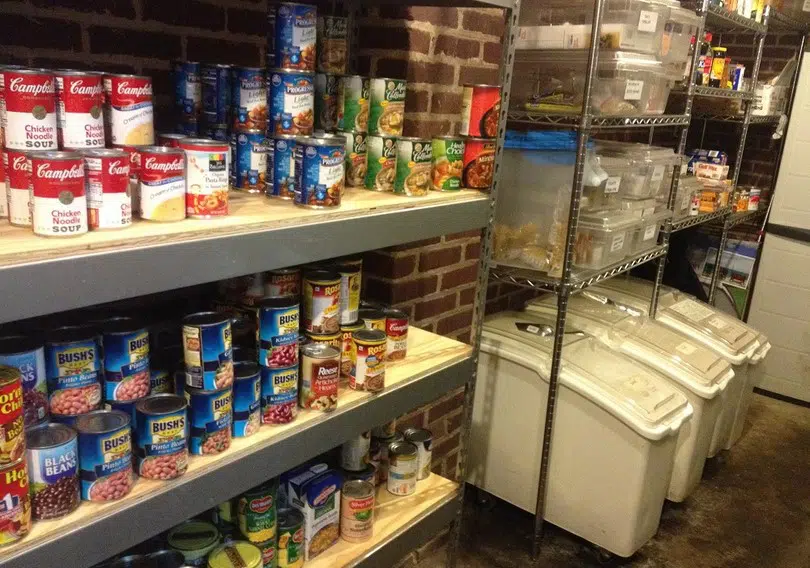
The bottom line is, set aside time for food storage. Take advantage of sales, seasonal surpluses, even just free time in the afternoon for canning. As you build your supply, you’ll be building added peace of mind that you and your family are ready for anything, and if nothing else, always have something in the cupboard for dinner.





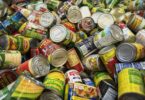
Actually, I find this article quite useful! I don’t really believe in storing huge amounts of food in case some disaster happens – but the idea of having something fresh canned or freeze-dried for the winter, for example, makes me excited.
In our family the grandma was always mad about drying and storing herbs and fruit in August and September. And I still remember some of her recepies that I now apply in my own family. I don’t do a lot ’cause it takes quite an amount of time to get all the cans ready. But maybe I should rethink it since it’s a cheaper and healthier way to get through winter than to buy loads of nutritional supplements in a drugstore.
Canning for winter is indeed a good idea. Not only you will have the chance to preserve vegetables and fruits at the peak of their season, but you will also be saving money.
I agree. Stocking up on non-perishable items or food items with a long shelf is a very good idea, especially now that we are at an age that SHTF can happen any time. I have yet to try canning but I have my own mini-herb garden that I routinely trim, preserving the cuttings.
Hi Sarah,
The whole idea of canning and preserving is to take advantage of fresh food when it’s abundant.